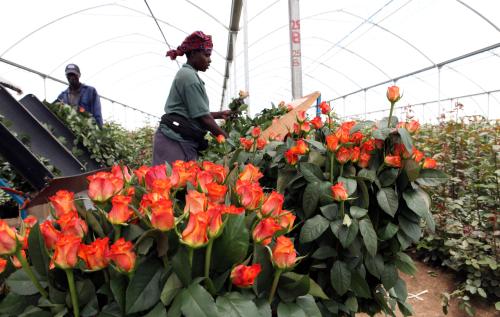It is not uncommon for research articles and blogs on youth employment in sub-Saharan Africa to open with a statement such as:
- “Sub-Saharan Africa will need to create 18 million jobs each year until 2035, to accommodate young labor market entrants.”
- “The working-age population in the region will, on average, experience a net increase of 20 million per year over the next two decades. … How can sub-Saharan Africa add 20 million jobs a year to keep up with such pace of population growth?”
These overarching statements are misleading. Why? Because they refer to the annual increments to the working-age population, not the labor force. The annual increments to the working-age population come from the net flows into the age group 15 and above—that is those who turn 15 in a specific year minus those 15 and above who die. But not everybody of working-age participates in the labor force. And it is the labor force—those who are employed plus those looking for work (unemployed)—who need jobs.
Importantly, the labor force does not grow by the same increment, or even at the same rate, as the working-age population because most of those who turn 15 are still in school. Globally, the youth (age 15-24) labor force participation rate (LFPR) is a low 41 percent, and, in Africa, it is declining—for some very good reasons:
- As lower-income countries get richer, educational access improves, and youth can stay in school longer.
- Young women in their twenties are often out of the labor force for at least part of the year owing to childbirth and their subsequent responsibility to nurse and care for babies.
For example, in Ghana, the youth (age 15-24) LFPR in 1960 was 64 percent, but by 2015, with many more youth in school, it had fallen to 43 percent. In 2018, for all sub-Saharan African low-income and lower-middle-income countries, the LFPR was estimated at 45 percent; for lower-middle-income countries worldwide it was estimated at 30 percent (World Development Indicators). Moreover, the female youth LFPR in Africa is not particularly low: The International Labor Organization (ILO) estimates it at 46 percent in 2019. The gender gap in male-female LFPR in Africa is about the same as it was in North America in 1999, and in Western Europe today.
Using an estimated youth LFPR of 45 percent implies that Africa’s labor force will grow by only about 8 million to 9 million people per year over the next 20 years. For a labor force currently estimated at 440 million people, this is a modest amount to absorb each year. And Africa’s youth were finding jobs before the COVID-19 crisis hit: The ILO estimates the average youth unemployment rate in 2020 in sub-Saharan Africa was only 9 percent, about the same as in North America.
However, labor forces are national, not continental, so countries with high levels of labor force growth or very slow economic growth can be expected to experience more labor absorption challenges. In Africa, several large countries have rapidly growing labor forces and low education access, resulting in high youth LFPR. For example, in Niger, the labor force is growing rapidly owing to one of the highest fertility rates in the world, but access to education, especially for girls, is low. In fact, only 54 percent of female primary students reach sixth grade. As a result, the LFPR in the 15-24 age group is 61 percent. Other African countries with similar issues are the Central African Republic and the Democratic Republic of the Congo. A different problem occurs in countries with lower levels of labor force growth but stagnant economies—for example, South Africa. These countries are currently experiencing very high youth unemployment, indicating labor absorption challenges as well.
In sum, the African region has employment challenges related to a past history of colonialization and economic development policy mistakes, as well as poverty itself. But let’s not exaggerate them; that doesn’t help us understand either the challenges or the solutions.
For more on the complicated discussion around strategies to address the creation of good jobs in Africa, see “Good news, Africa is creating jobs—but the narrative is complicated” and “Young Africans need more and better jobs, not more training.”
For more on AGI’s research into the potential for “industries without smokestacks” to create jobs for African youth and drive structural transformation, see “Job creation for youth in Africa: Assessing the potential of industries without smokestacks” or the results from the South Africa case study (summary here) or Senegal case study.
The Brookings Institution is committed to quality, independence, and impact.
We are supported by a diverse array of funders. In line with our values and policies, each Brookings publication represents the sole views of its author(s).








Commentary
It’s easy to exaggerate the scope of the jobs problem in Africa. The real story is nuanced.
April 19, 2021